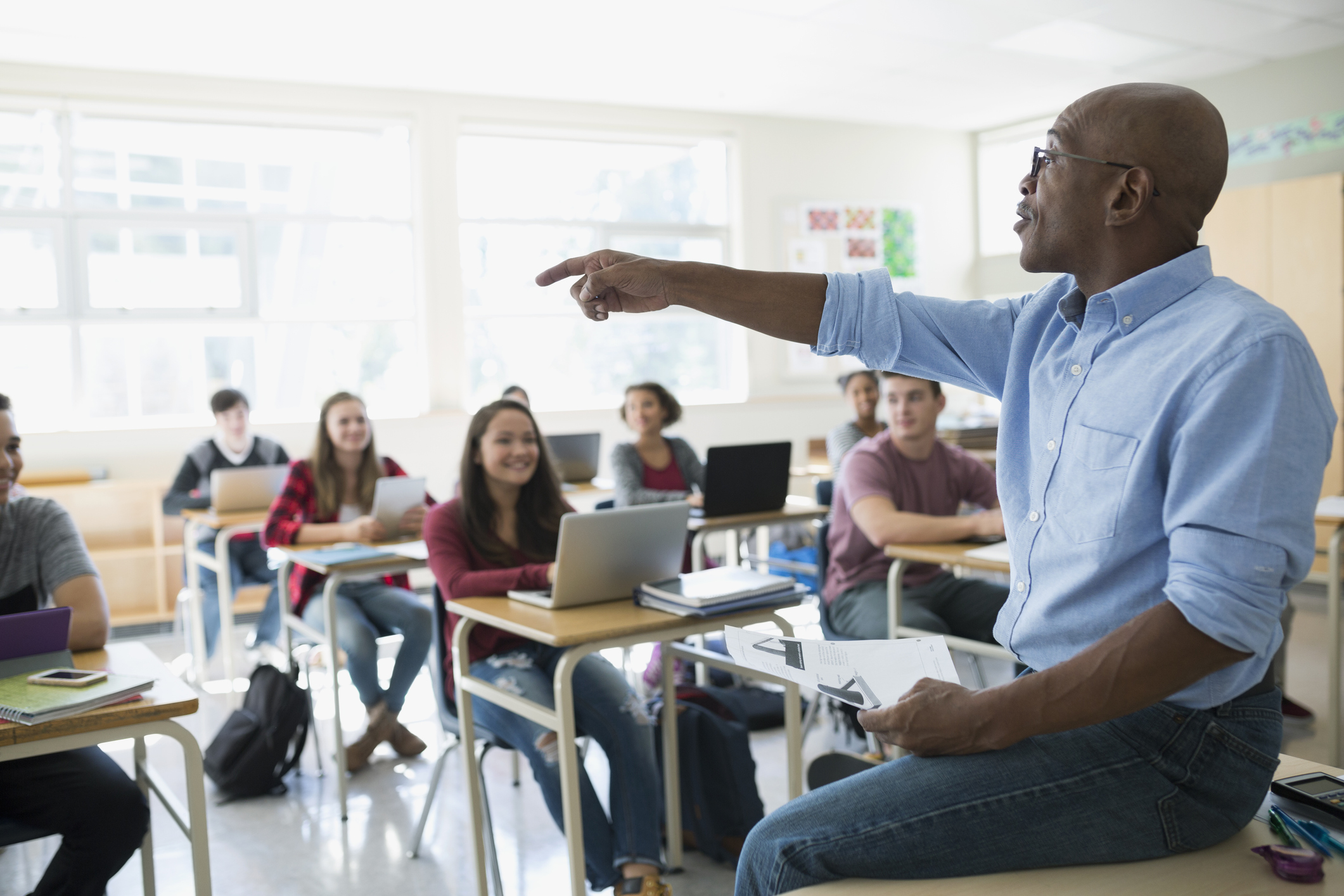Find the Best Primary Science Tuition Singapore for Enhanced Learning
Find the Best Primary Science Tuition Singapore for Enhanced Learning
Blog Article
A Comprehensive Guide to the Numerous Knowing Techniques in Key Scientific Research Direction
The expedition of diverse discovering techniques in primary science instruction offers an opportunity for instructors to boost student interaction and comprehension considerably. By taking a look at hands-on knowing methods, inquiry-based methods, and joint strategies, we can recognize reliable methods that deal with different discovering styles. Additionally, the integration of innovation and differentiated direction plays a crucial duty in promoting a comprehensive environment. The question continues to be: exactly how can these approaches be properly applied in the classroom to maximize their effect? The solution depends on a better assessment of each method and its effects for training science.

Hands-On Knowing Techniques
Hands-on learning strategies play a pivotal role in primary science direction, engaging students in active expedition and experimentation. These approaches enable learners to engage directly with materials and sensations, promoting a deeper understanding of clinical concepts. By utilizing manipulatives, designs, and real-life experiments, instructors produce an environment where pupils can observe, assume, and examine their concepts.
Such techniques not only boost understanding but additionally grow critical thinking and analytic skills. When pupils join tasks like constructing straightforward equipments, growing seeds, or performing chemical responses, they are motivated to ask concerns and seek solutions with their very own observations. This experiential technique assists to demystify complex scientific principles, making them much more obtainable and relatable.
Furthermore, hands-on knowing promotes cooperation among peers, as trainees typically operate in groups to perform experiments or share searchings for. This teamwork not just enriches their learning experience yet likewise creates vital social skills. Eventually, integrating hands-on methods in key science direction fosters a lifelong love of understanding and interest concerning the natural globe, laying a solid foundation for future academic pursuits in scientific research and past.
Inquiry-Based Knowing
Inquiry-based understanding is an instructional strategy that encourages trainees to ask inquiries, investigate phenomena, and build their very own understanding of clinical concepts. This technique moves the emphasis from conventional teacher-led direction to an extra student-centered experience, where students take the campaign in their educational journey. By promoting interest, inquiry-based understanding advertises much deeper engagement with the material, allowing trainees to check out subjects in a purposeful context.
In technique, this strategy frequently includes hands-on experiments, monitorings, and essential reasoning tasks that straighten very closely with the clinical approach. Pupils are urged to create theories, layout examinations, and assess information, which grows crucial abilities such as analytic and logical reasoning. The role of the educator in this framework is to facilitate expedition, assisting trainees with the inquiry procedure while urging independent idea and partnership.
Furthermore, inquiry-based knowing supports a sense of possession over the discovering procedure, inspiring trainees to pursue expertise proactively. This technique not just boosts understanding of scientific principles however likewise cultivates a long-lasting love for knowing, equipping pupils with the skills necessary to browse a significantly complicated world.
Collaborative Understanding Approaches
Joint learning methods encourage pupils to take part in meaningful communications with peers, fostering a shared duty for their educational end results. In main science direction, these approaches encourage learners to interact to check out scientific concepts, solve issues, and perform experiments (primary science tuition Singapore). By taking part in team tasks, students can take advantage of diverse point of views, permitting richer understanding and retention of scientific knowledge
One secret element of collaborative discovering is the focus on communication skills. Pupils must verbalize their ideas, pay attention actively to others, and bargain concepts, go right here every one of which are essential expertises in both academic and real-world contexts. This social interaction not only improves their understanding of clinical concepts but also advertises teamwork and conflict resolution abilities.
When students see the worth of their payments within a group, they are extra likely to take possession of their learning journey. Generally, incorporating collective understanding methods in key science direction grows a dynamic knowing setting that prepares pupils for future academic and social difficulties.
Innovation Assimilation in Science
The integration of innovation in main scientific research guideline enhances learning experiences by supplying cutting-edge devices and sources that sustain various mentor methods, consisting of joint understanding - primary science tuition Singapore. Using digital platforms, simulations, and interactive applications allows students to engage deeply with scientific concepts, assisting in a much more hands-on technique to discovering
Digital research laboratories, for example, make it possible for students to perform experiments securely and successfully, advertising inquiry-based discovering. These devices can replicate real-world scientific scenarios, allowing students to envision intricate procedures that would certainly be tough to duplicate in a standard classroom setting. Modern technology promotes communication and collaboration among students, as they can share searchings for and work with each other on tasks with online systems.
Furthermore, multimedia presentations and instructional videos can improve lessons by accommodating diverse understanding styles, making abstract visit here principles a lot more available. Information analysis devices likewise empower pupils to collect and analyze scientific information, reinforcing essential believing abilities. Generally, the strategic unification of innovation in key science guideline not only improves involvement but likewise prepares pupils for a technically innovative society, outfitting them with important abilities for future clinical endeavors.
Separated Instruction Methods
Set apart instruction methods are necessary for addressing the diverse requirements of students in key science education. These methods make it possible for instructors to tailor their teaching approaches to accommodate varying abilities, rate of interests, and finding out designs within the class. By using differentiated instruction, teachers can produce an inclusive environment that promotes interaction and improves understanding of scientific ideas.
One efficient method is to utilize versatile grouping, which allows trainees to work together with peers at similar skill levels or with differing perspectives. This approach urges peer understanding and advertises important reasoning. Additionally, offering choices in assignments can encourage pupils, enabling them to select projects that reverberate with their rate of interests while still satisfying curricular objectives.
Moreover, incorporating tiered assignments is an additional useful technique. Deliberately jobs with varying levels of intricacy, educators can ensure that all students are suitably challenged, regardless of their effectiveness. Using developmental assessments to find out this here evaluate understanding additional enables educators to change their educational techniques dynamically, ensuring that each student receives the assistance they need.
Eventually, implementing separated direction techniques in key science education and learning not only improves student discovering end results but additionally cultivates an enthusiasm for scientific research, preparing students for future scholastic searches.

Verdict
In recap, reliable primary science direction requires a diverse strategy that incorporates hands-on knowing, inquiry-based methods, and collective methods. The combination of innovation and separated guideline better provides to varied understanding designs, cultivating a setting helpful to expedition and critical reasoning.
The exploration of varied learning methods in primary scientific research guideline offers a possibility for instructors to enhance trainee interaction and understanding dramatically.Hands-on learning strategies play a crucial function in main science instruction, involving pupils in energetic expedition and testing.Inquiry-based knowing is an instructional method that encourages pupils to ask concerns, check out phenomena, and construct their very own understanding of scientific concepts.Joint discovering methods encourage students to engage in purposeful interactions with peers, fostering a common obligation for their educational results. In general, including collective learning strategies in main scientific research direction cultivates a vibrant learning atmosphere that prepares students for future academic and social obstacles.
Report this page